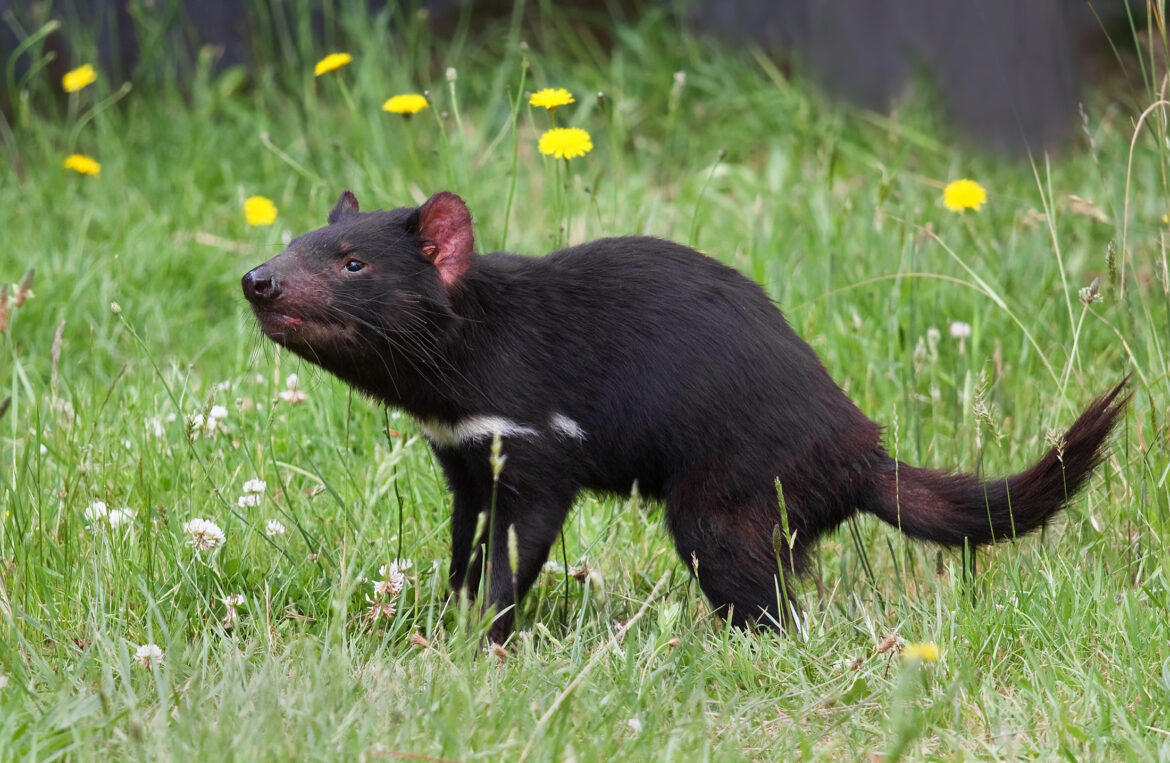By Rebecca Bracken
In this article, I’ll discuss an interesting conservation obstacle from the other side of the globe.
Cancers, unlike other diseases, normally can’t be transferred from one individual to another. However, there is a cancer found on the small island of Tasmania that is responsible for nearly wiping out an entire wild species, the Tasmanian devil.
This disease is transferred by contact which involves the transfer of cancerous cells from the infected individual to a susceptible individual. This type of transmissible cancer has the ability to cause death within 3 to 6 months after contact, with no probability of recovery. Because of its mortality rates, the Tasmanian Devil has been driven almost to extinction by this Devil Facial Tumor Disease (DFTD).
Tasmania is a relatively small state of 68,000 kilometers located just south of Australia. The Australian state actually consists of 334 islands, with the largest island making up 94% of the total area. With a diverse landscape, Tasmania is home to a variety of unique wildlife, including the endemic Tasmanian devil. More than 42% of the environment has been set aside as national parks, World Heritage Areas, and forest or marine reserves.
Tasmanian devils are believed to have spread to Australia, and eventually Tasmania, from what is now South America, sometime during the time of Gondwana about 80-100 million years ago. As a marsupial carnivore, Tasmanian devils are related to quolls, marsupial mice, and mulgara, and are distantly related to other marsupials, such as kangaroos, wombats, and opossums. With a white throat patch and occasionally white spots, the black-coated Tasmanian devil is quite distinctive.
As carnivorous scavengers, Tasmanian devils have very strong, well developed jaw muscles that are used to crush bone and tear through thick layers of muscle and skin. They generally feed on carrion, but will also eat insects, snakes, and small amounts of vegetation. Tasmanian devils are known for their communal feedings, which are normally accompanied by loud vocalizations and aggressive activities.
In the more recent past, specifically the 1990s, the Tasmanian devil was listed as a stable species by the International Union for Conservation of Nature, but this assessment was changed to endangered in 2008. The total global population declined by about 60% in a 10 year period, ending in 2008.
It was estimated that in the early 1990s there were approximately 130,000 – 150,000 Tasmanian devils, but that number dwindled until there were only about 10,000 – 25,000 individuals remaining in 2007.
First identified in 1996, DFTD was discovered on several Tasmanian devils in northeast Tasmania, where the population density was very high, and has caused a rapid decline in the number of individuals in that area. The disease causes a variety of large cancerous tumors around the face and neck, and causes death in the affected individuals within a few months of the onset of symptoms.
Since DFTD is such a severe disease, and is currently on path to wipe out the Tasmanian devils, there is a large amount of research being devoted to finding out the mechanisms of the disease, and why this species is so susceptible to it. The goal of this type of research is to apply what is discovered to the conservation of the Tasmanian devil via the use of the information in captive breeding programs, as well as to use it to sample healthy animals from within the disease impacted regions and use them to create a desired genetic distribution.
Currently, while there is only guarded optimism that the species can survive into the future, the research being focused on this unique species will hopefully lead to advanced treatments for other wildlife and maybe even humans.
Photo: A Tasmanian Devil in Tasmania
Attribution: JJ Harrison (https://www.jjharrison.com.au/), CC BY-SA 3.0 <https://creativecommons.org/licenses/by-sa/3.0>, via Wikimedia Commons

